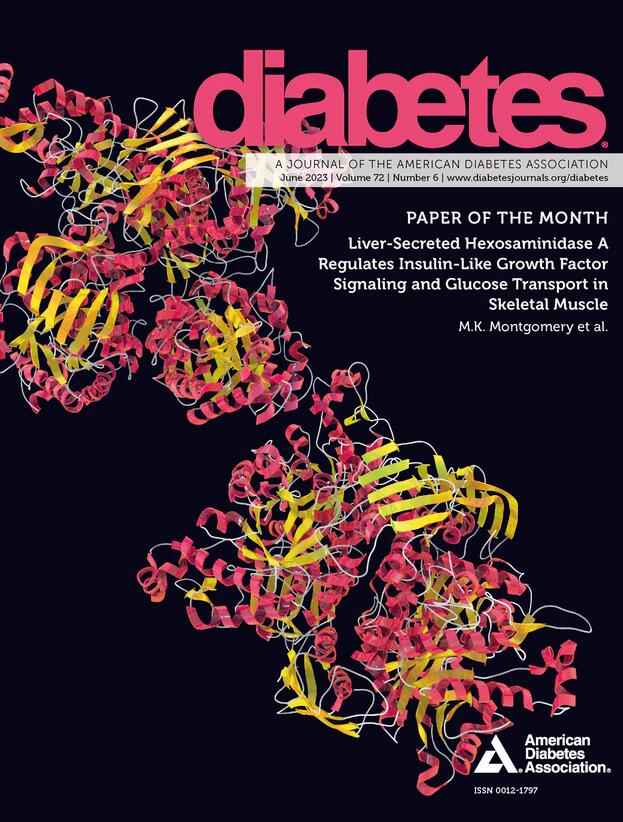233-OR: CGM指标数据缺失的发生和影响——1型糖尿病运动计划(T1DEXI)数据分析
IF 6.2
1区 医学
Q1 ENDOCRINOLOGY & METABOLISM
引用次数: 0
摘要
前言与目的:CGM数据的缺失会影响临床决策。本研究探讨了T1DEXI研究中数据缺失对CGM指标的影响。方法:研究1:根据连续读数之间的时间间隔确定CGM数据的间隙。研究2:为了评估间隙大小对CGM参数的影响,一项模拟研究随机引入间隙大小为1-10、11-50或50个连续缺失数据点的缺失数据,同时保持所有组中相同的总体缺失率20.83%。CGM血糖指标包括mean、SD、CV、TAR、TIR和TBR(缩写见图B),与没有缺失数据的对照组进行比较。结果:在T1DEXI CGM数据集中,1-10的缺口占所有缺失的15.76%,但频率占68.47%;11-50的缺口占所有缺失的41.06%,频率占25.44%;>;50的缺口占所有缺失的43.18%,但频率只占6.09%。模拟研究表明,与较小的缺失间隔相比,较大的缺失间隔导致较高的Mean Absolute Percentage Error(图B)。结论:CGM数据经常出现小误差,但误差很小;而大的数据缺口虽然不太频繁,但与CGM指标中的大误差有关,特别是在TAR和TBR中。这些发现强调了对大间隙进行准确预测以改善CGM数据解释的必要性。詹:没有。S.J. Fisher:没有。张向东:没有。本研究得到了美国国立卫生研究院(通过资助U01DK135111和UL1TR001998)、华盛顿大学刚果民主共和国(资助号:UL1TR001998)的支持。P30DK020579),肯塔基大学糖尿病和肥胖研究优先领域和Barnstable布朗糖尿病和肥胖中心。内容完全是作者的责任,并不一定代表美国国立卫生研究院的官方观点。本出版物基于1型糖尿病运动倡议(T1DEXI)研究的数据,该研究已通过Vivli公司提供。Vivli没有参与或批准本出版物的内容,也不对本出版物的内容负责。本文章由计算机程序翻译,如有差异,请以英文原文为准。
233-OR: Occurrence and Impact of Missing Data on CGM Metrics—Analysis of Data from Type 1 Diabetes Exercise Initiative (T1DEXI)
Introduction and Objective: Missing CGM data can confound clinical decision making. This study explores the impact of data missingness on CGM metrics from the T1DEXI study. Methods: Study 1: Gaps in CGM data were determined based on time intervals between consecutive readings. Study 2: To evaluate the effect of gap sizes on CGM parameters, a simulation study randomly introduced missing data with gap sizes of 1-10, 11-50, or >50 continuous missing data points while maintaining the same overall missing rate of 20.83% in all groups. CGM glucose metrics including mean, SD, CV, TAR, TIR, and TBR (see Figure B for abbreviations), were compared to a control group with no missing data. Results: In the T1DEXI CGM dataset, gaps of 1-10 account for 15.76% of all missingness but 68.47% of the frequency, gaps of 11-50 account for 41.06% of all missingness and 25.44% of the frequency, and gaps of >50 account for 43.18% of all missingness but only 6.09% of the frequency. The simulation study showed that, compared to smaller missing gaps, larger gaps resulted in higher Mean Absolute Percentage Error (Figure B). Conclusion: Small gaps in CGM data are frequent but cause minimal errors; whereas large data gaps, though less frequent are associated with large errors in CGM metrics particularly in TAR and TBR. These findings highlight the need for accurate prediction of large gaps to improve CGM data interpretation. Disclosure D. Zhan: None. S.J. Fisher: None. X.D. Zhang: None. Funding This research was supported by US National Institutes of Health (through Grants U01DK135111 and UL1TR001998), the DRC at Washington University (Grant No. P30DK020579), the University of Kentucky Diabetes and Obesity Research Priority Area and the Barnstable Brown Diabetes and Obesity Center. The content is solely the responsibility of the authors and does not necessarily represent the official views of the NIH. This publication is based on the data from the Type 1 Diabetes EXercise Initiative (T1DEXI) Study that has been made available through Vivli, Inc. Vivli has not contributed to or approved, and is not in any way responsible for the contents of this publication.
求助全文
通过发布文献求助,成功后即可免费获取论文全文。
去求助
来源期刊

Diabetes
医学-内分泌学与代谢
CiteScore
12.50
自引率
2.60%
发文量
1968
审稿时长
1 months
期刊介绍:
Diabetes is a scientific journal that publishes original research exploring the physiological and pathophysiological aspects of diabetes mellitus. We encourage submissions of manuscripts pertaining to laboratory, animal, or human research, covering a wide range of topics. Our primary focus is on investigative reports investigating various aspects such as the development and progression of diabetes, along with its associated complications. We also welcome studies delving into normal and pathological pancreatic islet function and intermediary metabolism, as well as exploring the mechanisms of drug and hormone action from a pharmacological perspective. Additionally, we encourage submissions that delve into the biochemical and molecular aspects of both normal and abnormal biological processes.
However, it is important to note that we do not publish studies relating to diabetes education or the application of accepted therapeutic and diagnostic approaches to patients with diabetes mellitus. Our aim is to provide a platform for research that contributes to advancing our understanding of the underlying mechanisms and processes of diabetes.
 求助内容:
求助内容: 应助结果提醒方式:
应助结果提醒方式:


